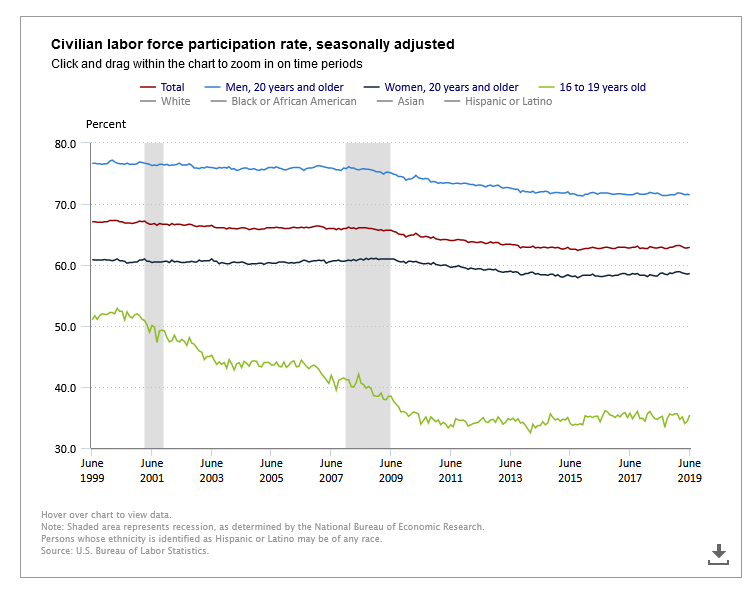Employment Blog July 2019
This employment blog is from the Bureau of Labor Statistics, U S Department of Labor. Nonfarm payroll employment increased by 224,000 in June, and the unemployment rate was little changed at 3.7 percent. Over the month, notable job gains occurred in professional and business services, in health care, and in transportation and warehousing. Incorporating revisions for April and May, which decreased employment by 11,000, monthly job gains averaged 172,000 in the first half of 2019. This is below the average monthly job gain of 223,000 for 2018.
In June, professional and business services added 51,000 jobs, following little employment change in May (+24,000). Thus far in 2019, employment growth in professional and business services has averaged 35,000 per month, compared with an average of 47,000 per month in 2018.
Health care employment increased by 35,000 in June, including gains in ambulatory health care services (+19,000) and hospitals (+11,000). Over the past 12 months, health care has added 403,000 jobs.
Employment in transportation and warehousing expanded by 24,000 in June, with gains in couriers and messengers (+7,000) and air transportation (+3,000). Overall, transportation and warehousing has added 158,000 jobs over the past 12 months.
Construction employment continued to trend up in June (+21,000). Over the past 12 months, construction employment has increased by 224,000.
In June, employment in manufacturing edged up (+17,000), following little change in recent months. Job gains occurred in computer and electronic products (+7,000) and in plastics and rubber products (+4,000) in June. So far in 2019, employment growth in manufacturing has averaged 8,000 per month, compared with 22,000 per month in 2018.
Employment showed little change over the month in other major industries–including mining, wholesale trade, retail trade, information, financial activities, leisure and hospitality, and government.
The labor force participation rate, at 62.9 percent, was about unchanged in June. The employment-population ratio was 60.6 percent for the fourth month in a row. This information is detailed in Chart 1 below.

In June, 4.3 million people were working part time for economic reasons (also referred to as involuntary part-time workers), essentially unchanged from the previous month. Among those neither working nor looking for work in June, 1.6 million were considered marginally attached to the labor force, little changed from a year earlier. (People who are marginally attached to the labor force had not looked for work in the 4 weeks prior to the survey but wanted a job, were available for work, and had looked for a job within the last 12 months.) Discouraged workers, a subset of the marginally attached who believed no jobs were available for them, numbered 425,000 in June, also little changed from a year earlier.
